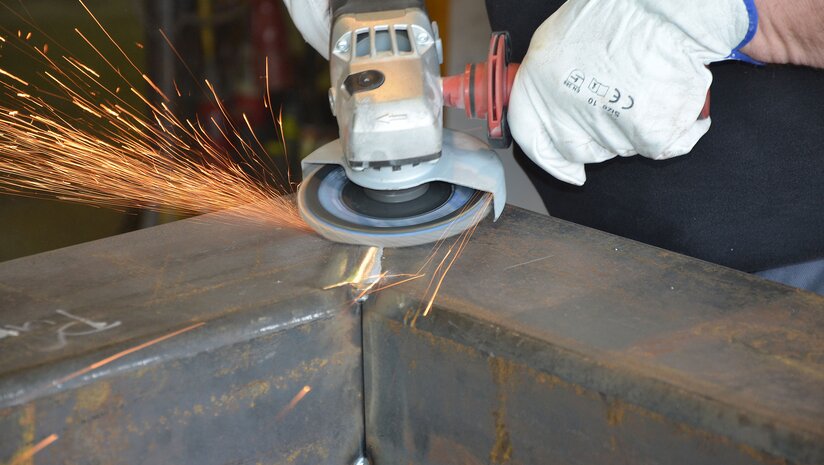
Weld leveling
The aim of leveling is to adjust the last weld layer applied to the height of the workpiece.
What does weld leveling mean?
The purpose of leveling is to adjust the last applied weld to the height of the workpiece. This means that protruding areas of the so-called top layer are ground off. The result is a seamless, even surface. This can be finished later with other tools, e.g. to create a high-gloss surface or a surface with a satin feel.
Leveling with grinding discs is difficult and requires some practice to hit the right angle. Otherwise, undesirable phenomena such as undercutting and gouging can occur.
The use of flap discs is much more convenient for this work step. They can be used in a more controlled and precise manner, have a long service life, and are less noisy.
Which tools do I use for weld leveling?
Flap discs with zirconia alumina in a conical shape are suitable for leveling. This shape has the advantage that the contact pressure can be applied precisely to a small contact surface. This means that the material can be removed precisely and cleanly only at the necessary points.
Depending on the desired grinding pattern of the top layer after leveling, grit sizes of 40-60 can be used for a coarse pattern. If a finer surface appearance is desired - e.g. because the surface will be polished or lacquered afterward - a grit size of 80-120 should be used.

Pictured: Leveling of a weld seam